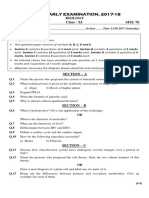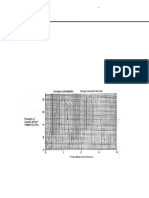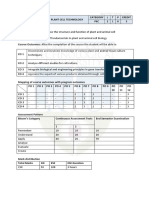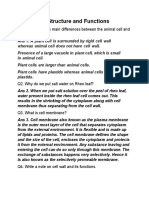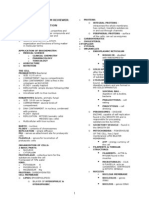0 ratings0% found this document useful (0 votes)
15 viewsSET II - S.5 Biology Paper II.
SET II - S.5 Biology Paper II.
Uploaded by
serunkuumacraishCopyright:
© All Rights Reserved
Available Formats
Download as PDF, TXT or read online from Scribd
SET II - S.5 Biology Paper II.
SET II - S.5 Biology Paper II.
Uploaded by
serunkuumacraish0 ratings0% found this document useful (0 votes)
15 views4 pagesOriginal Title
SET II- S.5 Biology Paper II.
Copyright
© © All Rights Reserved
Available Formats
PDF, TXT or read online from Scribd
Share this document
Did you find this document useful?
Is this content inappropriate?
Copyright:
© All Rights Reserved
Available Formats
Download as PDF, TXT or read online from Scribd
Download as pdf or txt
0 ratings0% found this document useful (0 votes)
15 views4 pagesSET II - S.5 Biology Paper II.
SET II - S.5 Biology Paper II.
Uploaded by
serunkuumacraishCopyright:
© All Rights Reserved
Available Formats
Download as PDF, TXT or read online from Scribd
Download as pdf or txt
You are on page 1of 4
Name’s of student………………………………………………………………..
School Name……………………………………………………………………….
BIOLOGY PAPER II
P530/2
SENIOR FIVE
MARCH- APRIL
COMPREHENSIVE BIOLOGY TRANSFORMATION INITIATIVE.
UACE
S.5 CANDIDATES- 2024
PAPER 2
End of term one-2024.
2 HOURS AND 30 MINUTES
INSTRUCTIONS TO THE CANDIDATES:
This paper consists of section A and B.
Answer question one in section A plus 3 questions in section B
Candidates are advised to read questions carefully, organize their
answers and present them precisely and logically, illustrating with well
labelled diagram wherever necessary.
Adapt to the 21st century Biology Pedagogical skills.
1
SECTION A (40 Marks)
n.b – question one is compulsory to all candidates.
A scientist investigates the roles of organelles in the synthesis and transport of
polypeptides through cells. The scientist:
• Isolates cells and incubates them in a liquid containing radioactively
labelled amino acids. Solution was isotonic, buffered and nutrient rich.
• Leaves the cells for 80 minutes so that they have time to absorb the
radioactively labelled amino acids and synthesise polypeptides.
• Measures the radioactivity of 3 different types of organelle at 5-minute
intervals.
• Calculates the percentage of the total cell radioactivity in each type of organelle.
Figure below shows the percentage of total cell radioactivity in the Rough
endoplasmic reticulum, Golgi body and Secretory vesicle. Study it
carefully and provide credible responses.
a) Compare the percentage of total cell radioactivity in the Golgi body
and secretory vesicle. (07 marks)
b) Describe the relationship between the percentage total cell radio-
activities in the following organelles.
(i) Rough endoplasmic reticulum and Golgi body. (05 marks)
(ii) Golgi body and secretory vesicle. (05 marks)
Adapt to the 21st century Biology Pedagogical skills.
2
c) Explain the relationship between the total radio-activities in the
following organelles.
(i) Rough endoplasmic reticulum and Golgi body. (07 marks)
(ii) Golgi body and secretory vesicle. (07 marks)
d) With reasons, suggest explanations for the following observations.
(i) Using amino acid that was radioactively labelled. (02 marks)
ii) Buffered, isotonic and nutrient rich solution. (05 marks)
e) Calculate the mean rate of change in percentage radioactivity from
60 to 80 minutes for secretory vesicle. (02 marks)
Section b (60 marks)
Choose three questions from this section.
2a) Describe the main components of connective tissues.
(05 marks)
b) Explain the significances of the main mammalian connective
tissues. (15 marks)
3a) Describe the structure of the following protein levels.
(i) Primary structure. (03 marks)
(ii) Secondary structure. (07 marks)
(iii) Tertiary structure. (05 marks)
b) Explain the reasons behind the existence of a variety of
carbohydrates. (05 marks)
4a) Describe the chemical composition of chromosomes. (07 marks)
b) Explain how the following mechanisms cause genetic variation in
populations.
(i) Crossing over. (03 marks)
(ii) Independent segregation and assortment. (05 marks)
c) Differentiate between cell division and nuclear division in a life
cycle of a cell. (05 marks)
Adapt to the 21st century Biology Pedagogical skills.
3
5a) Describe the structure of the cell membrane in accordance to the
fluid mosaic model. (10 marks)
b) Explain how the cell membrane shows selectivity of transport of
materials. (10 marks)
6a) Describe the following key stages in protein synthesis.
(i) Amino-acid synthesis. (05 marks)
(ii) Amino acid activation. (05 marks)
b) (i) What is meant by a genetic code? (03 marks)
(ii) Describe the different properties of a genetic code.(07 marks)
----------------------END---------------------
Evolution is real!! Biology setting evolves basing on the
contemporary setters
Comprehensive Biology Transformation Initiative.
Kampala –Uganda.
Contributions made by MUGWE MARTIN.
Adapt to the 21st century Biology Pedagogical skills.
4
You might also like
- O-Level Biology PracticalsDocument71 pagesO-Level Biology PracticalsIffat Akber50% (2)
- Half Yearly Examination, 2017-18: Biology Time: 3 Hrs. Class - XI MM: 70Document2 pagesHalf Yearly Examination, 2017-18: Biology Time: 3 Hrs. Class - XI MM: 70sneh0% (1)
- AP Biology Unit 1 Powerpoint CollectionDocument218 pagesAP Biology Unit 1 Powerpoint CollectionMatt FerrariNo ratings yet
- SET II - S.5 Biology Paper II.Document4 pagesSET II - S.5 Biology Paper II.serunkuumacraishNo ratings yet
- S.5 Bio P2Document4 pagesS.5 Bio P2lololarri376No ratings yet
- (Uace) Set Ii Post MockDocument4 pages(Uace) Set Ii Post Mocklololarri376No ratings yet
- Cbse Class 11 Biology 2016Document3 pagesCbse Class 11 Biology 2016ctbcmpmNo ratings yet
- Senior Five Biology Examination Uganda Advanced Certificate of Education Biology (Theory) Paper 2Document4 pagesSenior Five Biology Examination Uganda Advanced Certificate of Education Biology (Theory) Paper 2kokodejoelNo ratings yet
- Uace Bio Paper Two Set 12 2023-JusanDocument3 pagesUace Bio Paper Two Set 12 2023-Jusanasadukimbugwe20No ratings yet
- S.5 Bio Eot 1Document3 pagesS.5 Bio Eot 1imeldaozitiruNo ratings yet
- 2023_Biology_II_BCG__MCB__PCBDocument4 pages2023_Biology_II_BCG__MCB__PCBnshimiyimanadenis14No ratings yet
- DSF 3 Biology P530 2Document3 pagesDSF 3 Biology P530 2Mwesigwa HannahNo ratings yet
- UACE BIO PAPER TWO SET 2 2023-JusanDocument3 pagesUACE BIO PAPER TWO SET 2 2023-JusanCampbell OGENRWOT0% (1)
- Final Kasshpa Mock Biology Paper 2023Document4 pagesFinal Kasshpa Mock Biology Paper 2023alfahadrians2No ratings yet
- Biology 17Document8 pagesBiology 17anirudhjindal032No ratings yet
- Uace Bio Paper Two Set 14 2023-JusanDocument3 pagesUace Bio Paper Two Set 14 2023-Jusanzawayarobert45No ratings yet
- BIOLOGY-theory-and-practical-EXAM-OF-THE-THIRD-TERM-2021-FOR-S5 (1)Document21 pagesBIOLOGY-theory-and-practical-EXAM-OF-THE-THIRD-TERM-2021-FOR-S5 (1)Eric SmithNo ratings yet
- Bio 2 Set 08.Document3 pagesBio 2 Set 08.alfahadrians2No ratings yet
- Bio PP2 S.6 ST. MARY - S KITENDE 2020Document4 pagesBio PP2 S.6 ST. MARY - S KITENDE 2020Batuuse George WilliamNo ratings yet
- Class - X - Science - First Preliminary Examination - QP - Set ADocument5 pagesClass - X - Science - First Preliminary Examination - QP - Set ALaksh RameshNo ratings yet
- AL Biology Past Paper 91-03 (PART I) ADocument58 pagesAL Biology Past Paper 91-03 (PART I) ARainbow WongNo ratings yet
- Biology Level LIP Course QuestionsDocument47 pagesBiology Level LIP Course Questions2anasnegNo ratings yet
- Bio2 S5 Majet 2023 Term 3Document2 pagesBio2 S5 Majet 2023 Term 3fopoka810No ratings yet
- PS04EMIC01 - Microbial PhysiologyDocument2 pagesPS04EMIC01 - Microbial PhysiologyHafsa SaiyedNo ratings yet
- Holiday Work S5-Part 1Document3 pagesHoliday Work S5-Part 1muhwezisheilah44No ratings yet
- LugandaDocument3 pagesLugandasashasarah582No ratings yet
- Science - Set 11519635502Document4 pagesScience - Set 11519635502Sudarshan Rsa100% (2)
- S.6 Biology P2 Mock 1Document3 pagesS.6 Biology P2 Mock 1eusterkengonzi5No ratings yet
- P530/2 Biology Paper 2: FabianiskiDocument2 pagesP530/2 Biology Paper 2: FabianiskikokodejoelNo ratings yet
- Cell TestDocument3 pagesCell TestOjan Benard LeoNo ratings yet
- Section A: Time Allowed: 3 Hours Marks: 70Document4 pagesSection A: Time Allowed: 3 Hours Marks: 70Dhiraj GuptaNo ratings yet
- Cytology Test by DR. RiboseDocument2 pagesCytology Test by DR. RibosepatrickougaNo ratings yet
- Ussbio p2 Pre Mock Gpbc 2024 2025Document3 pagesUssbio p2 Pre Mock Gpbc 2024 2025AYUK JOSEPH NCHENGENo ratings yet
- Uace Bio Paper Two Set 10 2023-JusanDocument3 pagesUace Bio Paper Two Set 10 2023-Jusanwivan3918No ratings yet
- BTT312 - Ktu QbankDocument7 pagesBTT312 - Ktu QbankAnn JohnNo ratings yet
- MCM1101200601 Biomolecules and Cell Biology PDFDocument2 pagesMCM1101200601 Biomolecules and Cell Biology PDFfyi fyiNo ratings yet
- Biology Examination of The Third Term 2021 For S6Document20 pagesBiology Examination of The Third Term 2021 For S6bizimanafilsNo ratings yet
- 11 - BiologyDocument3 pages11 - BiologyDhruv WadhaweNo ratings yet
- No of Printed Pages: 4Document4 pagesNo of Printed Pages: 4shannonjohnlewis34No ratings yet
- 2324 Level L (Gr10 UAE - GULF) Biology Course QuestionsDocument75 pages2324 Level L (Gr10 UAE - GULF) Biology Course QuestionsVan halenNo ratings yet
- Biology Cells Practice TestDocument6 pagesBiology Cells Practice TestcamNo ratings yet
- s.5 Bio2 Midland Eot2-1Document4 pagess.5 Bio2 Midland Eot2-1marynantongo261No ratings yet
- S6 Aceiteka 2017 Biology P2Document3 pagesS6 Aceiteka 2017 Biology P2ebenezerssenyonjo3No ratings yet
- Aas 121 2021 3Document3 pagesAas 121 2021 3nyasha ngazaNo ratings yet
- Bio Qns KasingabalyaDocument42 pagesBio Qns KasingabalyakasingabalyaandrewNo ratings yet
- Biology Made FamiliarDocument71 pagesBiology Made Familiarwaiswakeneth4No ratings yet
- Cell Structure and Function Question BankDocument9 pagesCell Structure and Function Question Banksoumya8587757No ratings yet
- All Type Essays - Biology emDocument27 pagesAll Type Essays - Biology emjoker boy100% (1)
- SET III - (UACE) CBTI Resourceful Exam-2024.Document4 pagesSET III - (UACE) CBTI Resourceful Exam-2024.NAMIIRO ROSETTENo ratings yet
- Biology 1 Pre Mock 1 2024Document5 pagesBiology 1 Pre Mock 1 2024Uledi Mgalula MrishoNo ratings yet
- Fe - Biology Xi Set ADocument6 pagesFe - Biology Xi Set AAntariksh SainiNo ratings yet
- Biology Revision Booklet 11Document201 pagesBiology Revision Booklet 11allqnryanNo ratings yet
- 2024 Biology II Pcb Mcb Pcm AnpDocument8 pages2024 Biology II Pcb Mcb Pcm Anpniyemmy23No ratings yet
- No. of Printed Pages: 4Document4 pagesNo. of Printed Pages: 4Mehak ShireenNo ratings yet
- SBT 100 Cellular Basis of LifeDocument2 pagesSBT 100 Cellular Basis of Lifecyrilomondi48No ratings yet
- Aas 121 2021 1Document3 pagesAas 121 2021 1nyasha ngazaNo ratings yet
- 9th Bio Ques 1Document2 pages9th Bio Ques 1Yae KoNo ratings yet
- Chapter3 - Transport Across MembraneDocument5 pagesChapter3 - Transport Across MembraneBilly LamNo ratings yet
- Uneb Uace Biology P2 2022 Guide 2022Document9 pagesUneb Uace Biology P2 2022 Guide 2022ww46s8bmcjNo ratings yet
- 10th Science Solved Sample Paper 2017-18-2Document12 pages10th Science Solved Sample Paper 2017-18-2Maruti AgarwalNo ratings yet
- S.6 Biology P2 Mock 1Document3 pagesS.6 Biology P2 Mock 1cyber sec50% (2)
- Biomimetic Principles and Design of Advanced Engineering MaterialsFrom EverandBiomimetic Principles and Design of Advanced Engineering MaterialsNo ratings yet
- 8th Biology EM 2022Document112 pages8th Biology EM 2022Anil BhagadiNo ratings yet
- Membrane TransportDocument4 pagesMembrane TransportNiharika GhoshalNo ratings yet
- LIPIDS ReviewerDocument4 pagesLIPIDS ReviewermayiachiqtNo ratings yet
- PT GM1 2014 Medic UitmDocument8 pagesPT GM1 2014 Medic UitmSARAH SAFIAH TAJUL ARIFFINNo ratings yet
- Assignment 1A (A G)Document8 pagesAssignment 1A (A G)osasunloisNo ratings yet
- 9.1C: Types of Receptors: Learning ObjectivesDocument3 pages9.1C: Types of Receptors: Learning Objectivesstalker akoNo ratings yet
- Diffusion Definition: Concentration GradientDocument7 pagesDiffusion Definition: Concentration GradientDeb MukherjeeNo ratings yet
- SL Biology Syllabus NotesDocument52 pagesSL Biology Syllabus NotesRyel MuchunkuNo ratings yet
- 2.1 Digestion Ans PDFDocument7 pages2.1 Digestion Ans PDFtess_15No ratings yet
- Components of CellDocument21 pagesComponents of CellAl Christian YaboNo ratings yet
- Chapter 19 - LipidsDocument12 pagesChapter 19 - Lipidsfasaka_onNo ratings yet
- Cell Structure & FunctionDocument39 pagesCell Structure & Functiondacspinlac100% (9)
- Cell and Its Structure and Functions: Q1. Write Down The Main Differences Between The Animal Cell and The Plant CellDocument5 pagesCell and Its Structure and Functions: Q1. Write Down The Main Differences Between The Animal Cell and The Plant CellMuhhammed AliNo ratings yet
- Structure of Cell Components and Its Functions NoteskartsDocument18 pagesStructure of Cell Components and Its Functions NoteskartsNiranjit SanasamNo ratings yet
- Chapter 7 AP BioDocument2 pagesChapter 7 AP Biomadeleine867% (3)
- PMDC MDCAT Curriculum 2023 Final PDFDocument11 pagesPMDC MDCAT Curriculum 2023 Final PDFmudassar ghouriNo ratings yet
- Intracanal MedicamentsDocument155 pagesIntracanal Medicamentssrishti jaiswalNo ratings yet
- Biology of Glucose Transport in The Mammary GlandDocument15 pagesBiology of Glucose Transport in The Mammary GlandJoha MarinNo ratings yet
- Practice Questions From LectureDocument4 pagesPractice Questions From LectureJeevikaGoyalNo ratings yet
- Biochemistry Prelim ReviewerDocument6 pagesBiochemistry Prelim ReviewerRosette Go86% (7)
- S.6 Bio P1Document14 pagesS.6 Bio P1Mwesigwa HannahNo ratings yet
- MCDB !B Midterm 1 KeyDocument8 pagesMCDB !B Midterm 1 KeyKenji SoaresNo ratings yet
- Manifestation of Life A. Structural Organization: Catherine Genevieve Barretto-LagunzadDocument5 pagesManifestation of Life A. Structural Organization: Catherine Genevieve Barretto-LagunzadNoelle HarrisonNo ratings yet
- C349 Lec1Document26 pagesC349 Lec1navid akibNo ratings yet
- Veterinary Embryology Lab Exercise 6Document3 pagesVeterinary Embryology Lab Exercise 6john benedickNo ratings yet
- Should Albumin Be Used To Correct Hypoalbuminemia in The Critically Ill? NoDocument5 pagesShould Albumin Be Used To Correct Hypoalbuminemia in The Critically Ill? NoRika ParasayuNo ratings yet
- Biochem Lec M-3Document13 pagesBiochem Lec M-3GE SalenNo ratings yet
- Assesment MultipleDocument4 pagesAssesment MultipleAnn Marjorie GodinNo ratings yet

